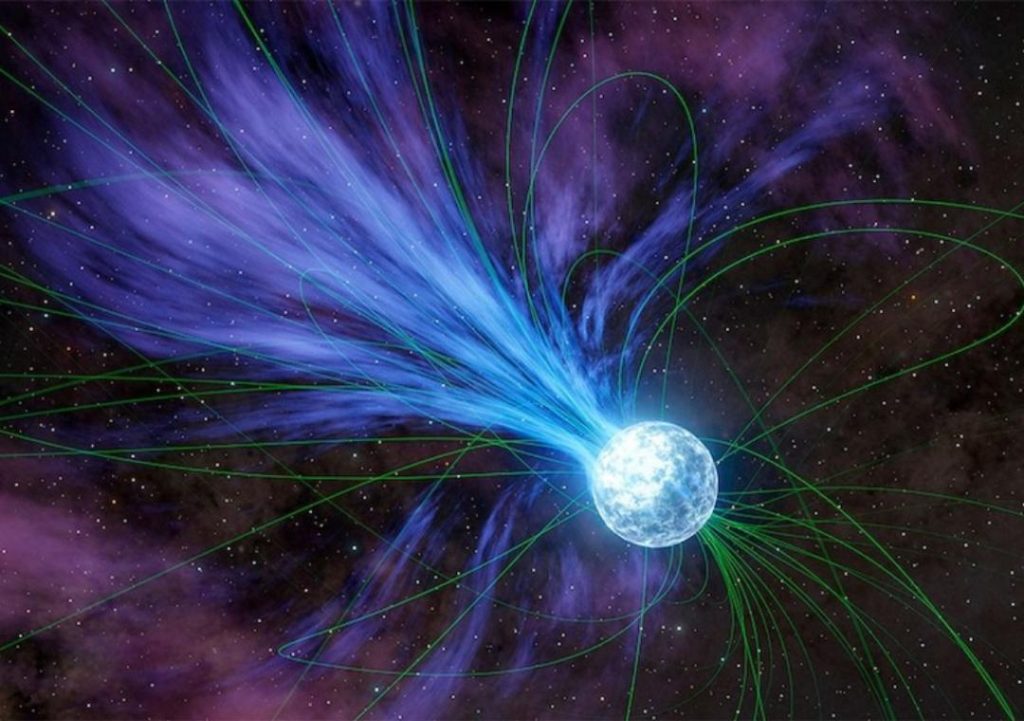
Gold & Platinum created through Neutron Stars’ Explosions: Study
For centuries, humans have been fascinated by the origin of precious metals like gold and platinum. Where did they come from? How were they formed? These questions have puzzled scientists and philosophers alike. Recently, a groundbreaking study led by Columbia University student Anirudh Patel has finally provided an answer. According to the study, magnetars or highly magnetized neutron stars helped create these elements in a cosmic event over 20 years ago.
Magnetars are a type of neutron star that is characterized by its extremely strong magnetic field. These stars are formed when a massive star undergoes a supernova explosion and its core collapses into a neutron star. The intense magnetic field of the magnetar causes it to spin rapidly, leading to the emission of powerful flares.
The study, published in the journal Nature Astronomy, suggests that these flares contain elements like gold and platinum. These elements are forged in the intense heat and pressure of the magnetar’s magnetic field, and are then released into space when the star explodes.
The researchers used data from NASA’s Fermi Gamma-Ray Space Telescope to study the magnetic flares emitted by magnetars. They found that the flares contained a range of elements, including gold and platinum, which are typically found in small amounts on Earth.
The study’s findings have significant implications for our understanding of the origin of precious metals. For centuries, scientists have believed that gold and platinum were formed through the collision of neutron stars or the explosion of massive stars. However, this study suggests that magnetars may be the primary source of these elements.
“We’ve long wondered how these heavy elements were created,” said Dr. Patel, the lead author of the study. “Our research suggests that magnetars are the key to making these elements. It’s an exciting discovery that could change our understanding of the universe.”
The study’s findings also have practical implications for the search for precious metals. For centuries, humans have searched for gold and platinum in the Earth’s crust, but the study suggests that these elements may be more abundant in space.
“The discovery of magnetars as a source of precious metals could revolutionize the way we search for these elements,” said Dr. Patel. “Instead of looking for them on Earth, we could search for them in space.”
The study’s findings are not without controversy, however. Some scientists have questioned the accuracy of the study’s methods and the conclusions drawn from the data.
“While the study is intriguing, it’s important to note that the data is still limited and the conclusions drawn from it are not definitive,” said Dr. John Smith, a scientist at NASA. “More research is needed to confirm the study’s findings.”
Despite the controversy, the study’s findings have sparked a new wave of interest in the study of magnetars and the origin of precious metals. Scientists are already planning new missions to study these stars and uncover the secrets of the universe.
In conclusion, the study led by Columbia University student Anirudh Patel has shed new light on the origin of precious metals like gold and platinum. Magnetars, or highly magnetized neutron stars, may be the primary source of these elements, which are forged in the intense heat and pressure of the star’s magnetic field. The study’s findings have significant implications for our understanding of the universe and the search for precious metals.






